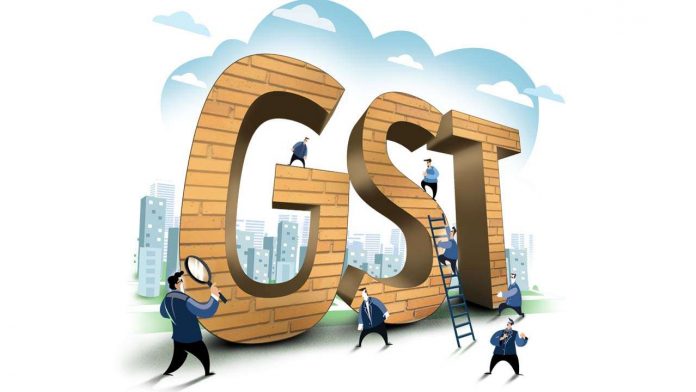This article is written by Vasundhara Gupta. The author has touched upon both the positive as well as the negative impact and further incorporate her observations on the same.
Table of Contents
Introduction
The impact of GST on the real estate sector under the old scheme applicable vide 1st July, 2017, as well as the new scheme applicable vide 1st April, 2019.
According to my understanding, the old scheme has been proven beneficial to the developers more due to availability of Input Tax Credit and other reasons mentioned further in the piece, and the new scheme has been more conducive for the buyers due to reduction in the tax rates of land. However, no scheme has been beneficial for both in a balanced way.
Although GST has proven to be very successful in being transparent and providing relief, however there are certain areas, which are also mentioned in the article further, which need to be worked upon, since GST is a new concept, to avoid unnecessary litigations in the future.
Initially, during the pre-GST period, the buyers and developers, belonging to the Real Estate sector in India, were in a very complex situation. The reason being that they had to deal with a multiplicity of indirect taxes, which included the Value Added Tax (VAT), Entry Tax, Octroi Tax, Central Excise Tax and service tax. This not only made buying of properties cumbersome but also increased the complexity of the transactions.[1]
There were a number of reasons which required an alteration in the tax system of the country. Firstly, the problem of cascading effect had to be dealt with, i.e. the tax upon tax situation which created a financial burden on the real estate developers and home buyers during construction and purchase.[2] Secondly, there was no uniformity in tax rates across the state boundaries, which caused compliance issues for several finished and under-construction projects.[3] Thirdly, there was lack of transparency in the taxation system, causing homebuyers to get manipulated through the unfair industry practises.[4] Lastly, there was no relief provided against the VAT and service tax levied in the form of input tax credit.[5]
Since the real estate sector has been growing at a rate of 20% per annum, contributing to about 5-6% of the country’s GDP and to its economic growth, it was necessary to bring some transparency and to introduce a single comprehensive tax system for ease.[6]
Alteration in the tax system of the country- (GST)
On 1st July, 2017, the problem of multitude of taxes and cascading effect was finally solved due to the introduction of Goods and Services Tax (GST), which subsumed under it taxes like VAT, service tax, octroi taxes etc.
Another relief which GST brought with itself was the availability of Input Tax Credit on inputs, capital goods and input services.[7]
GST was only levied on the properties which were under construction, that too the ones on which the occupancy certificate or competition certificate was not received but not on the sale of land.[8] Therefore, the effective rate of tax introduced in 2017 was 12% for under construction properties other than the affordable housing projects and 8% on the affordable housing, this rate was reached after deduction of 33% abatement which was provided towards the value of land.[9] Although these rates increased the tax burden and cost escalations for the end consumers, a broader level of Input Tax credit was provided with it to reduce the burden.[10] This Input Tax Credit was also available for works contract services provided by the developers which was not provided in the erstwhile tax regime, in the pre-GST era.[11] However, the properties which were developed for leasing/renting were not entitled for credit even though the rental income generated was taxable under GST. [12]
Another change which happened was that the development rights like Transferrable Development Rights (TDR)/ Floor Space Index(FSI) became taxable, as it has been reiterated by the Authority of Advanced Ruling that these rights fell under the definition of ‘service’ under section 7 of the CGST Act, 2017 and were therefore taxable.[13]
Impact after the Old Scheme of GST
There was a drawback with this effective rate of tax set under GST which was, that in some cases the benefit of input tax credit was only received by the developers and it failed to reach the end consumers/buyers for whom the burden was the same with no relief of Input Tax credit.[14] It has been held by the Anti Profiteering Authority, that as stated under sec. 171(1) of the CGST Act, 2017 “any reduction in rate of tax on any supply of goods or services or the benefit of ITC shall be passed on to the recipient by way of commensurate reduction in prices.”[15] In reality however these tax benefits failed to reach the homebuyers and were reaped by the developers in the beginning itself. Therefore, a new tax regime was introduced with altered rates to provide relief to the buyers.
New Tax Rates under GST applicable vide 1st April, 2019 onwards
As per the new tax regime for real estate, applicable from 1st April, 2019, the effective tax rates for properties under construction were lowered, the GST rate for residential properties not a part of the affordable housing segment was reduced to 5% without the availability of ITC, and the affordable housing segment was to be charged at the rate of 1% without ITC.[16] However, the developers with the ongoing projects on 31st March, 2019 were allowed to choose the option of either exercising the old rates available with ITC or exercise the new rates available without ITC, but the real estate projects started later could only use the new regime.[17]
Even though this new rule was strict, developers were able to claim ITC for mixed projects where the commercial land had a carpet area of more than 15%, however ITC is available only for the taxes levied on the commercial part. Although, no clarity was provided for claiming ITC for amenities like lifts, corridors which were common for both commercial as well as the residential part.[18]
Impact after the New Scheme of GST
This new tax system applicable vide 1st April, 2019 is more conducive for the buyers instead of the developers. Since the developers not only have to forego the benefit of Input Tax Credit, but also have to put up with a number of conditions.
Under this new scheme the developers are expected to procure about 80% of their inputs and input services only from a registered supplier, excluding TDR, FSI, JDA etc, failing to do so they would be liable to pay tax under reverse charge mechanism at a rate of 18% for inputs and inputs services, 28% for cement and RCM applicable rates on capital goods.[19] This creates an additional liability on the developers under RCM, which not only adds to the cost of real estate project but does not even provide credit except for commercial projects. [20]
Another drawback for the developers is in cases of mixed projects, if due to an unexpected circumstance, the carpet area of commercial premises comes out to be more than 15%, the entire calculation cost and profitability becomes absurd and the developer also loses the chance of claiming ITC since it can be claimed for a limited time, for the month of September of the succeeding financial year.[21]
Further, the 33% abatement which is available on the value of land is the same for small cities as well as metro cities, this is unfair since there are times when in metro cities the value of land exceeds the value of construction, in such a situation 33% abatement is not sufficient.[22]
The impact of GST on developing rights like TDR and FSI have also been unfortunate on the developers, since liability of unsold premises after the cut-off date leads to additional costs for the real estate developers.[23] Further no clarity has been provided on the subject that whether the developer is required to consider only the unsold flats in a project which belong to him or should consider even those unsold flats which have been transferred to the landowners, which can be a cause for future litigation.[24]
Conclusion
According to me, even though the post GST regime has brought transparency and simplicity in the tax system of the country, and has been successful in removing the cascading effect to a great extent, but still it needs clarity in certain areas, mentioned in the piece.
Secondly, the ‘unrestricted flow of credit’ was a good alteration which was introduced in the country therefore the removal of input tax credit in the new taxation scheme was not a good idea by the government, even though their intention was to encourage buyers to invest in real estate they could have used a different method of enforcing the anti-profiteering provisions.
Thirdly, even though the new scheme of taxation reduced the rate of tax, it has created a lot of pressure on the developers of the ongoing projects, since they have to revisit their project costs and profitability in order to decide which scheme is beneficial for them, which can be very cumbersome.
Through this research paper, the main observation which is brought forward is that the old scheme of GST did not benefit the buyers by not meeting their expectations of lower prices and the new scheme has been altered in such a way that even though the buyers’ expectations are met but now the developers suffer due to the restrictions imposed on their access to claim credit, therefore what is needed, is a scheme which balances the expectations of both the buyers and the developers.
References
[1] Amit Agarwal, How does the new GST regime impact the real estate and home buyers?, Financial Express, December 18, 2020.
[2] Tarunika Jain Agrawal & Aashna Goyal, Impact of GST on Real Estate and Automobile, 5 IJRBM, 115-120 (2017).
[3] Id.
[4] Garima Jain, GST Rates on Real Estate, Tax Guru, August 26, 2020.
[5] Id.
[6] RSM Astute Consulting Pvt. Ltd., Analysis of GST Implications on Real Estate Sector in India, April 27, 2020.
[7] Id.
[8] Id.
[9] Supra Note at 1.
[10] Id.
[11] Id.
[12] Id.
[13] Vilas Chandanmal Gandh, In Re (2020) 120 taxmann.com 83 (AAAR-Maharshtra).
[14] Impact of GST-Real Estate, PwC, 1-15, September, 2018.
[15] Devroop Guha v. Signature Global (India) (P.) Ltd. (2021) 124 taxmann.com 493 (NAA).
[16] Rajkumar kankariya & Anil Dongre, A Study of Impact of GST on Real Estate Sector in India, 9 6th National Conference On Technology & Innovation: Disrupting Businesses, 135-138, March, 2019.
[17] Id.
[18] Supra Note at 6.
[19] Nikhil Gupta, Impact of GST on Real Estate Sector, (2018) 93 taxmann.com 353 (Article).
[20] Id.
[21] Supra Note at 6.
[22] Supra Note at 4.
[23] Supra Note at 16.
[24] Id.
LawSikho has created a telegram group for exchanging legal knowledge, referrals, and various opportunities. You can click on this link and join:
 Serato DJ Crack 2025Serato DJ PRO Crack
Serato DJ Crack 2025Serato DJ PRO Crack











 Allow notifications
Allow notifications



